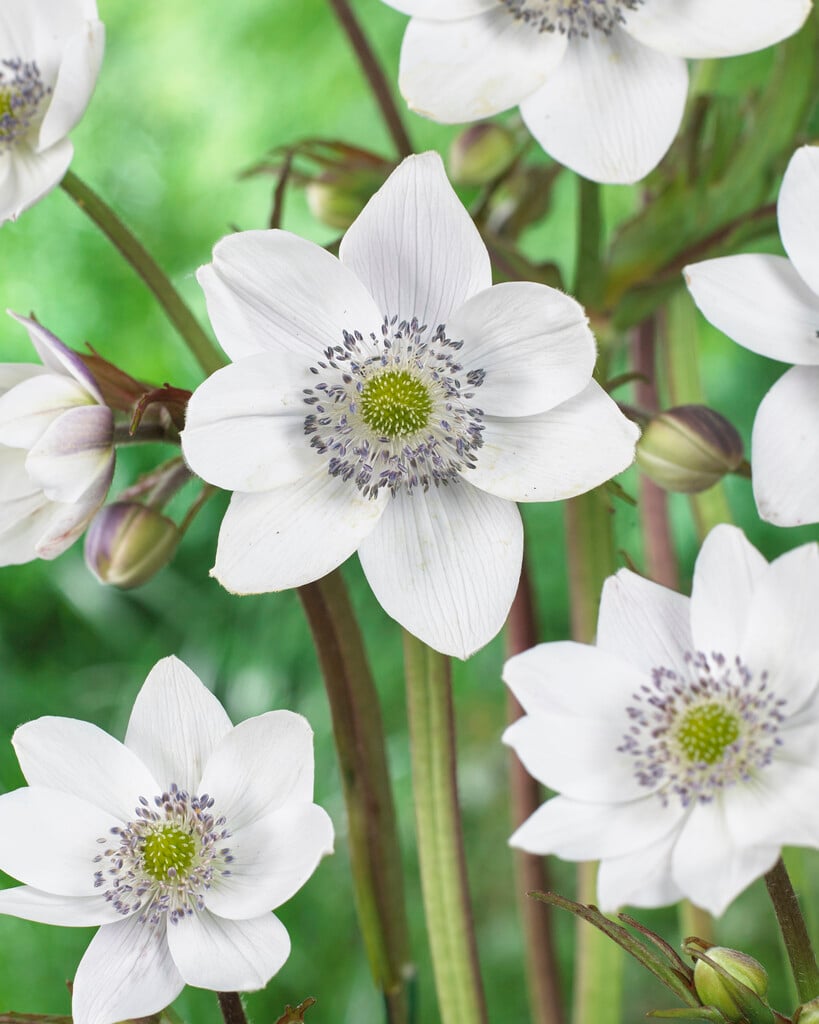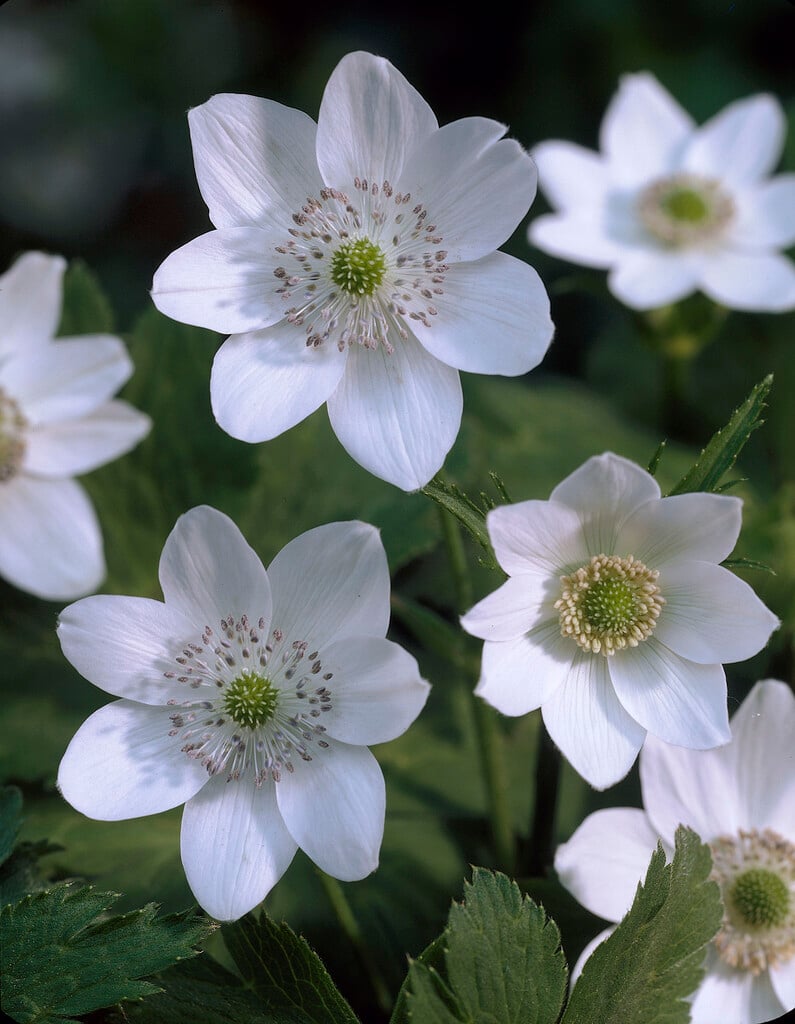Anemone leveillei
Anemone leveillei is a perennial with deeply divided softly hairy foliage forming a low mound over which elegant branching stems of delicate lilac-backed white flowers are borne, each with a central cluster of deep purple anthers.
Size
Ultimate height
0.5–1 metresTime to ultimate height
2–5 yearsUltimate spread
0.5–1 metresGrowing conditions
Moisture
Moist but well–drained, Well–drainedpH
Acid, Alkaline, NeutralColour & scent
| Stem | Flower | Foliage | Fruit | |
| Spring | Green | |||
|---|---|---|---|---|
| Summer | Purple White | Green | ||
| Autumn | ||||
| Winter |
Position
- Partial shade
Aspect
North–facing or South–facing or West–facing
Exposure
Exposed Hardiness
H4Botanical details
- Family
- Ranunculaceae
- Native to GB / Ireland
- No
- Foliage
- Deciduous
- Habit
- Columnar upright, Clump forming
- Potentially harmful
- Ingestion may cause mild stomach upset, and skin contact may cause irritation. Wear gloves and other protective equipment when handling
- Genus
Anemone are herbaceous perennials with fibrous, rhizomatous or tuberous rootstocks, palmately lobed leaves and saucer-shaped, usually 5-petalled flowers
- Name status
Correct
- Plant range
- Central China
How to grow
Cultivation
A woodland dweller, sutiable to mass plant in fertile, humus rich soil, but can grow in most cultivated soil, in semi-shade or full sun. Spreads rapidly once established. Avoid winter wet, dislikes being moved around.
Propagation
Propagate by division
Suggested planting locations and garden types
- Cottage and informal garden
- Wildflower meadow
- Flower borders and beds
- Cut flowers
- Underplanting of roses and shrubs
Pruning
Cut back in late autumn
Pests
May be susceptible to caterpillars and slugs
Diseases
May be susceptible to powdery mildew
Love gardening
Sign up to receive regular gardening tips, inspiration, offers and more
View our Privacy Policy
Get involved
The Royal Horticultural Society is the UK’s leading gardening charity. We aim to enrich everyone’s life through plants, and make the UK a greener and more beautiful place.

